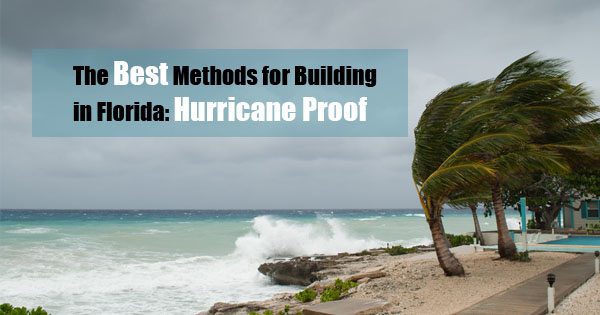
A Beginners Guide to Building in the Hurricane Belt
Even six months after Hurricane Irma devastated Puerto Rico and Florida, people are still talking about it. Though the storm has come and gone and many repairs are finished or are still underway, people are still traumatized by the sheer force that Irma brought. News4Jax recently noted that nobody foresaw that the storm would be one of the most damaging in 50 years. To say that you’re used to category 5 storms counts for little to nothing if you aren’t properly prepared for them. While contractors in coastal areas such as Florida are aware of the design aspects a home in the hurricane belt should have, everybody could use a refresher.
Use concrete if possible
While most contractors and builders would all agree that the easiest way to hurricane proof a building is to construct it out of concrete, not everyone shares the same opinion. In some areas, a fully concrete building might not be as welcomed as it should — especially if it’s built somewhere with a homeowners association. As much as it makes no sense to not use stronger materials such as concrete in these areas, there is only so much you can do in the end. If you are unable to use concrete due to restrictions on any front, try to find ways to still incorporate it structurally without compromising aesthetics.
Install high impact glass
The Florida Building Code, or FBC, states that structures within one mile of the coast need to have impact-resistant windows to stand against winds 110 miles per hour or more. As a smart builder and someone who wants their structures to last even against category 5 storms, using high impact glass on all projects is the best way to make them last. Almost any windowed surface can be configured with high impact glass, from sliding glass doors to impact resistant windows. Many window manufacturers that fabricate hurricane resistant windows also make hurricane impact doors. The material is made to withstand the forces of even the largest and deadliest of storms and could prove invaluable for home and business owners alike.
Design for uplift
Winds strong enough to disassemble a building is nothing new to contractors in hurricane states, although they still need to be considered when building. It’s important to meet the proper coding laws and use proper fastening techniques. There are many different means of construction fastening and will depend on the contractor, location, and type of structure.
In any case, whether a seasoned contractor or a newbie just starting out, it’s imperative to use the best materials and exceed all building requirements when working in severe weather areas such as Florida. A properly constructed building is all that stands between the hurricane and those that it threatens.
